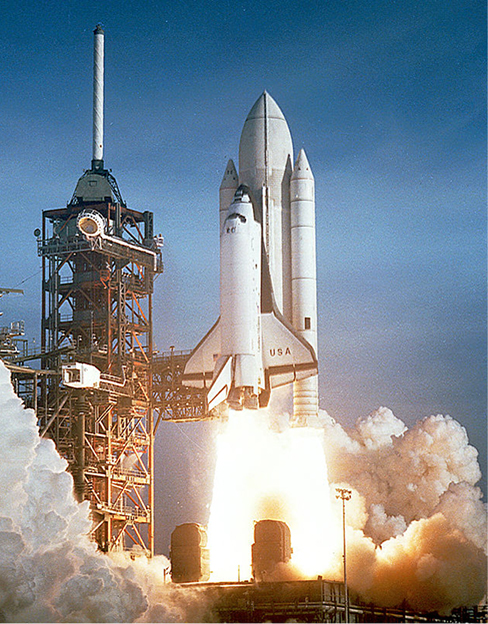| << Chapter < Page | Chapter >> Page > |
Now we deal with the case where the mass of an object is changing. We analyze the motion of a rocket, which changes its velocity (and hence its momentum) by ejecting burned fuel gases, thus causing it to accelerate in the opposite direction of the velocity of the ejected fuel (see [link] ). Specifically: A fully fueled rocket ship in deep space has a total mass (this mass includes the initial mass of the fuel). At some moment in time, the rocket has a velocity and mass m ; this mass is a combination of the mass of the empty rocket and the mass of the remaining unburned fuel it contains. (We refer to m as the “instantaneous mass” and as the “instantaneous velocity.”) The rocket accelerates by burning the fuel it carries and ejecting the burned exhaust gases. If the burn rate of the fuel is constant, and the velocity at which the exhaust is ejected is also constant, what is the change of velocity of the rocket as a result of burning all of its fuel?

Here’s a description of what happens, so that you get a feel for the physics involved.
The problem has the mass and velocity of the rocket changing; also, the total mass of ejected gases is changing. If we define our system to be the rocket + fuel, then this is a closed system (since the rocket is in deep space, there are no external forces acting on this system); as a result, momentum is conserved for this system. Thus, we can apply conservation of momentum to answer the question ( [link] ).

Notification Switch
Would you like to follow the 'University physics volume 1' conversation and receive update notifications?